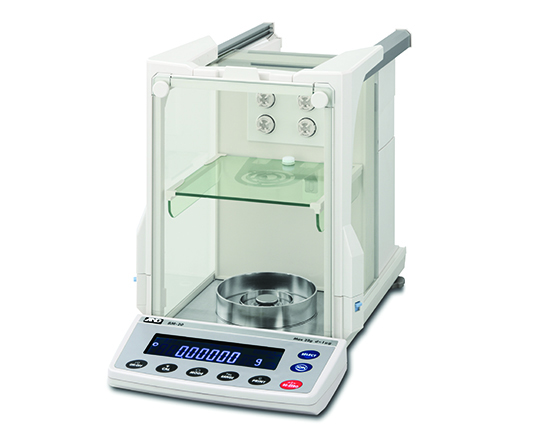Selecting the appropriate precision balance for your laboratory is crucial to ensuring accurate and reliable measurements. Precision balances, also known as analytical balances, are essential tools in various scientific and industrial settings, including research laboratories, pharmaceutical industries, and quality control laboratories.
Understanding Precision Balances
Precision balances are designed to provide highly accurate measurements of mass, typically to the nearest 0.001 grams. They are essential for applications where even the slightest deviation in mass can affect the outcome of experiments or production processes. These balances are characterized by their high resolution, repeatability, and sensitivity.
Key Considerations
1. Accuracy and Precision
Accuracy and precision are paramount when selecting a balance. Accuracy refers to how close the measured value is to the true value, while precision indicates the repeatability of measurements. Choose a balance with a high degree of both accuracy and precision to ensure consistent and reliable results.
2. Capacity
The capacity of a precision balance is the maximum weight it can measure. Laboratories often require balances with varying capacities depending on the nature of their work. Ensure the balance you choose can handle the maximum weight you anticipate measuring, while also providing the necessary precision for smaller samples.
3. Readability
Readability, or resolution, refers to the smallest increment a balance can detect. For precision balances, this is usually in the range of 0.001 grams or finer. Consider the level of detail required for your measurements and select a balance with appropriate readability.
4. Calibration
Regular calibration is essential to maintain the accuracy of a precision balance. Some balances come with internal calibration features, which automatically adjust the balance to maintain accuracy. Others may require external calibration using standard weights. Choose a balance with a calibration method that suits your laboratory's needs and ensures reliable performance over time.
5. Stability and Environment
Precision balances are sensitive to environmental factors such as temperature, humidity, and air currents. Ensure your laboratory environment is suitable for the balance you choose. Some balances come with features to compensate for these factors, such as draft shields and temperature compensation. A stable environment will minimize errors and ensure accurate measurements.
6. User Interface and Software
The user interface of the balance should be intuitive and easy to use. Advanced models may offer touchscreens, programmable functions, and connectivity options for data transfer. Consider the software compatibility of the balance with your laboratory's data management systems. Seamless integration can streamline processes and improve efficiency.
7. Size and Footprint
The physical size and footprint of the balance are important, especially if space is limited in your laboratory. Ensure the balance fits comfortably in the designated area, leaving room for sample preparation and other necessary equipment.
8. Cost and Budget
Precision balances vary widely in cost, depending on their features and capabilities. Establish a budget based on your laboratory's requirements and prioritize features that are essential for your work. Remember that investing in a high-quality balance can save money in the long run by reducing errors and the need for frequent replacements.
9. Brand and Support
The reputation of the manufacturer and the availability of customer support are also important considerations. Choose a balance from a reputable brand known for producing reliable and durable equipment. Ensure that technical support and service options are readily available to address any issues that may arise.
10. Compliance and Standards
Depending on your industry and location, there may be specific regulations and standards that your precision balance must comply with. Ensure the balance you choose meets all relevant standards, such as ISO, GLP (Good Laboratory Practice), and GMP (Good Manufacturing Practice). Compliance with these standards ensures the reliability and acceptance of your measurements in regulatory and quality control processes.
Types of Precision Balances
Analytical Balances
Analytical balances are designed for highly accurate measurements, typically with a readability of 0.1 milligrams or finer. They are used in applications requiring precise measurements of small samples, such as in pharmaceutical research and chemical analysis. These balances often feature draft shields to protect the sample from air currents and other environmental factors.
Semi-Micro Balances
Semi-micro balances offer even higher precision, with a readability of 0.01 milligrams. They are ideal for applications that demand the highest level of accuracy, such as in analytical chemistry and microanalysis. These balances are highly sensitive and require careful handling and a stable environment.
Top-Loading Balances
Top-loading balances are more robust and have higher capacities compared to analytical balances, usually with a readability of 0.01 grams or finer. They are suitable for weighing larger samples or bulk materials while still providing high precision. These balances are commonly used in quality control laboratories and industrial applications.
Maintenance and Care
To ensure the longevity and accuracy of your precision balance, regular maintenance and proper care are essential. Follow these guidelines to keep your balance in optimal condition:
- Regular Calibration: Periodically calibrate your balance according to the manufacturer's recommendations to maintain accuracy.
- Cleanliness: Keep the balance clean and free from dust and debris. Use a soft brush or lint-free cloth to clean the weighing pan and surrounding area.
- Environment: Maintain a stable environment with controlled temperature and humidity. Avoid placing the balance near sources of vibration or drafts.
- Handling: Handle the balance with care, avoiding sudden movements or impacts that could affect its performance.
- Service and Support: Regularly check for firmware updates and seek professional service for any technical issues.
Conclusion
Choosing the right precision balance for your laboratory involves careful consideration of various factors, including accuracy, capacity, readability, calibration, stability, user interface, size, cost, brand reputation, and compliance with standards. By understanding your specific needs and the features of different types of precision balances, you can make an informed decision that ensures accurate and reliable measurements for your laboratory work. Investing in a high-quality precision balance will enhance the efficiency and reliability of your laboratory processes, ultimately contributing to the success of your scientific and industrial endeavors.





Comments